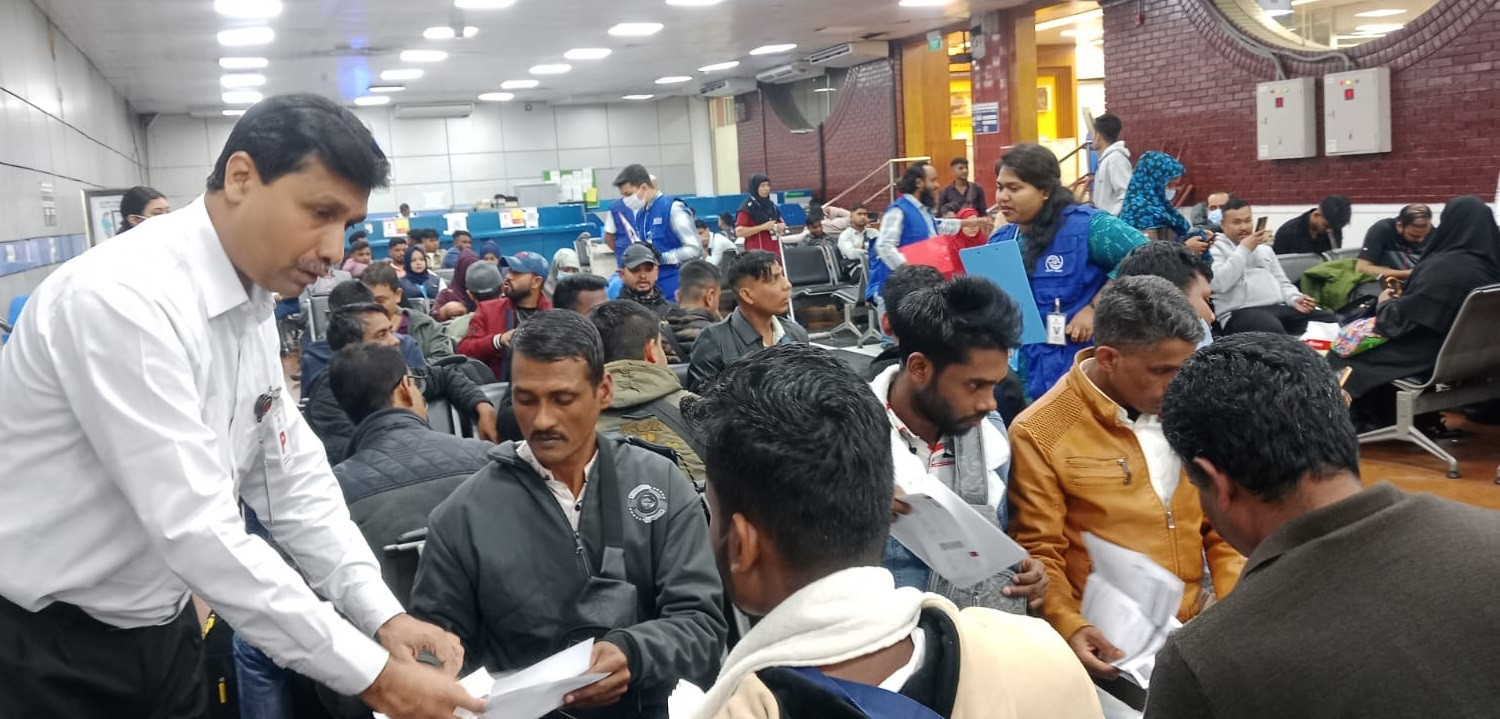After disrupting the cultivation of aman, Bangladesh’s second most important grain, yet another flood is now interrupting the country’s plan to rehabilitate thousands of flood-affected farmers in northern and central Bangladesh.
The latest flood struck in late September when many farmers were on their third attempt to grow aman, after their first two attempts faltered between June and August.
Thousands of other farmers had just sowed black gram or early winter vegetable following the government’s rehabilitation plan to recoup their losses.
Then there were thousands of others who just had their land ready for cultivation after having spent money and labour in removing tons of mud and debris the previous flood had brought to their land.
Then the untimely flood came, inundating thousands of hectares of agricultural land, and passed its 19th day on Sunday with seven rivers, including the Jamuna and the Padma, still flowing above their danger levels.
‘It’s like pouring water on a drowned mouse,’ Sher-e-Bangla Agricultural University’s development and poverty studies professor Mohammad Mizanul Haque Kazal told New Age, describing the situation the farmers find themselves in due to frequent floods.
Parts of Bangladesh that experienced several waves of monsoon flood were already economically vulnerable for farmers never received legitimate price for their crops, he said.
‘Farmers mostly grow crops to feed their families and sell what is extra to get some cash to invest in the next crop,’ said Mizan.
Bangladesh’s majority farmers are small, landless, who often rely on local loan sharks to borrow the money they need to grow their crops because the price they get from sale is always poor.
They are so poor that thousands of them after getting affected in frequent floods may not seem statistically significant against the overall agricultural losses but they represent thousands of families trapped in a vicious cycle of debt.
An official estimate of overall flood-related agricultural loss was not yet ready but economists and agricultural researchers linked recent increase in some essential food prices to their potential production fall.
After losing aman season, many farmers were specially looking to the early winter vegetable season when they quickly generate a quarter of their average annual income in just about two months.
But vast vegetable fields from northern to central Bangladesh were under water where farmers cultivated cabbages, beans, gourds, chillies, tomatoes and 31 other kinds of vegetables.
‘Vegetable price likely to remain high for some time for the production is likely to decline by a fourth,’ said Bangladesh Agricultural Research Institute’s horticulturalist Nazim Uddin.
The northern region, responsible for supplying half the country’s annual vegetable production, which is about 4 million tonnes, was badly affected by the ongoing flood.
The fall in vegetable production bears serious health implications for Bangladesh, where per head daily vegetable consumption is 160 grams against required 300 grams.
BARI scientists also warned that lentil cultivation was also impacted by the flood and oil seed and root crop cultivation might get affected by the flood.
‘Frequent losses of investment will put cultivation of future crop under stress,’ said Centre for Policy Dialogue research director Khondaker Golam Moazzem.
Floods put farmers under serious financial constraints and many of them may have run out of their sources of finance, mostly high-interest money lenders, because of the subsequent failed ventures in the past few months, he said.
‘The financial constrain may impact boro cultivation,’ said Moazzem, calling for the government to immediately ensure that farmers get free seeds and other agricultural inputs in the flood-affected areas.
He also suggested that the government give zero-interest loan to farmers and make sure that the incentive package announced for agriculture sector because of the coronavirus crisis be disbursed fast.
Accessing government loan seems impossible for many affected farmers such as Azizul Islam, a farmer at Mohishkhocha, Lalmonirhat, who is more comfortable with borrowing from local loan sharks at 20 per cent interest.
Aziz borrowed Tk 90,000 for clearing his 2.5 bighas field after flood and cultivating it twice with aman saplings the price of which had tripled after the flood.
But he lost it all. ‘I even lost my home to erosion,’ said Aziz.
New Age correspondent in Lalmonirhat reported that the latest flood inundated standing aman crop on 200,000 hectares and vegetables on 39,112 hectares in northern region.
Nearly 5,000 hectares of aman field is under water affecting 33,000 farmers in Sirajganj.
Black gram that aman growers cultivated after failing to grow aman on 933 hectares was destroyed by the flood in Sir










